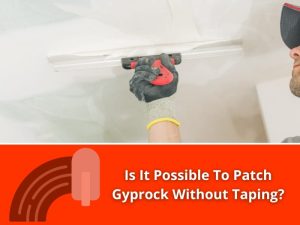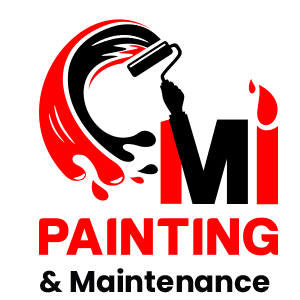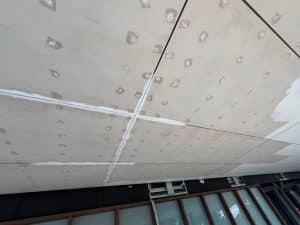Is It Possible To Patch Gyprock Without Taping?

Gyprock, or plasterboard, is famous for interior walls in many homes and commercial spaces across Sydney. It’s versatile, easy to install, and provides a smooth finish. However, it can develop cracks, holes, or dents that need attention over time. If you face a damaged gyprock surface, is it possible to patch the gyprock without taping? This guide explores this question and provides you with all the necessary information.
What are the standard methods to patch gyprock?
Patching gyprock can be accomplished through several methods, each suitable for different types of damage. Here are the most common techniques:
- Spackling compound: Ideal for small holes and dents, spackling compound is easy to apply and dries quickly.
- Joint compound: This is used for larger areas and can fill more significant gaps. It often requires sanding for a smooth finish.
- Gyprock patches: Pre-made patches can be adhered to larger holes, allowing you to skip some steps.
- Mesh tape with joint compound: While this involves taping, it strengthens the repair and is commonly used for larger patches.
Understanding the installation process of plasterboard is essential for achieving a smooth and durable finish in your interior spaces.
Can you effectively patch gyprock without using tape?
Yes, you can patch gyprock without using tape, although it may not be the most durable option for more extensive repairs. A joint compound or spackle can work well for small holes and minor damage. Here are some ways to do it:
- Filling small holes: For holes up to 10mm, apply spackle directly into the hole and smooth it out.
- Using a joint compound: For larger areas, you can apply the joint compound directly over the damaged area without tape, but it’s crucial to feather the edges to create a smooth transition.
- Repair patches: These can be applied without tape and provide a sturdy base for the compound.
While it’s possible to skip the tape for minor repairs, using it can strengthen your patch, especially for larger areas.
What materials do you need to patch gyprock?
To patch gyprock effectively, you’ll need suitable materials. Here’s a list of essentials:
- Patching compound: Choose between a spackling compound, joint compound, or a specific gyprock repair product.
- Putty knife: This tool is essential for smoothly applying the compound.
- Sanding block or paper: This finishes smoothly after the compound dries.
- Primer and paint: To blend the patched area with the surrounding wall.
- Utility knife: Useful for trimming rough edges or loose paper from the gyprock.
These materials will make your repair process smoother and more efficient.
How do you prepare the surface for gyprock patching?
Proper preparation is vital to a successful gyprock patch. Here’s how to prepare the surface:
- Clean the area: Remove any dust, dirt, or loose debris from the damaged area. A clean surface helps the compound adhere better.
- Trim-damaged gyprock: Use a utility knife to remove loose or frayed edges around the hole or crack.
- Dust off: After cutting, dust off the area again to ensure no particles interfere with the patching compound.
- Check for moisture: Ensure the area is dry; moisture can prevent the patch from adhering correctly.
Following these steps ensures that your patch will last and look seamless.
What techniques can you use for a seamless gyprock patch?
Achieving a seamless patch requires attention to detail and the proper techniques. Here are some effective methods:
- Proper installation: Use the right techniques to ensure a secure fit. Ensuring correct installation techniques and using suitable materials for your project can prevent gyprock screws from popping.
- Feathering the edges: When applying the compound, feather it beyond the damaged area to blend with the existing wall.
- Multiple thin coats: Apply several thin layers instead of one thick coat. This approach reduces drying time and improves adhesion.
- Sanding between coats: Lightly sand the area between applications to create a smooth surface for subsequent layers.
- Use a primer: Once the final layer dries, apply a primer before painting to improve adhesion and finish.
- Finishing techniques: Apply joint compound smoothly and sand down rough spots for an even surface.
These techniques will help you achieve a smooth and professional-looking repair.
Are there benefits to patching gyprock without taping?
Patching gyprock without taping can have its advantages. Here are some benefits:
- Simplicity: Small repairs are easier and quicker, making it ideal for DIY enthusiasts.
- Reduced drying time: The drying time is often shorter and has fewer materials.
- Less mess: Avoiding tape can lead to a cleaner work area with less dust and debris.
- Cost-effective: You save on materials and labour costs by doing it yourself for minor damages.
While these benefits are appealing, remember that they may not replace the durability of traditional methods in more significant repairs.
When should you consider hiring a professional for gyprock repairs?
While some repairs can be DIY projects, certain situations warrant professional help. Consider hiring a professional when:
- The damage is extensive: Large holes or multiple cracks may require more skill than a typical DIYer possesses.
- Structural issues are involved: If the damage affects the wall’s integrity, it’s best to consult a professional.
- You need more tools or time: Hiring a professional gyprock installation and repair can save you stress if you need the right tools or time to complete the project.
How can professional services enhance your gyprock repair projects?
Engaging professionals provides numerous benefits:
- Expertise: Experienced contractors know how to handle various gyprock repairs effectively.
- Quality materials: Professionals use high-quality materials that can enhance the longevity of your repairs.
- Time efficiency: They can complete the job quickly and efficiently, allowing you to focus on other priorities.
- Aesthetics: Professionals have an eye for detail and can ensure your repairs blend seamlessly with the existing wall.
You can rest assured that your gyprock repairs will be done right by choosing a reputable service.
If you’re facing gyprock issues and want a professional touch, Mi Painting & Maintenance is here to help! Our expert team offers comprehensive gyprock repair services tailored to your needs. With years of experience serving residential and commercial clients across Sydney, we always ensure a smooth finish. Hire Mi Painting & Maintenance for your next project, and let us handle your gyprock repairs efficiently and professionally!


